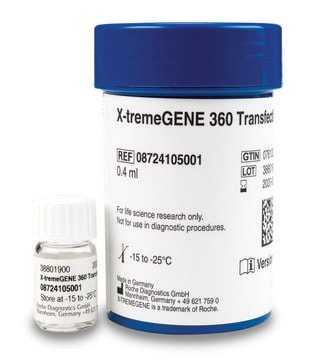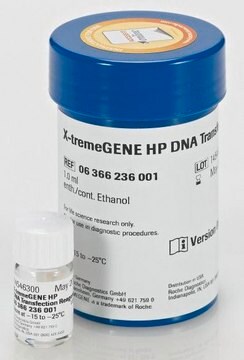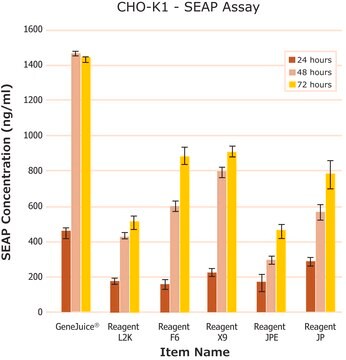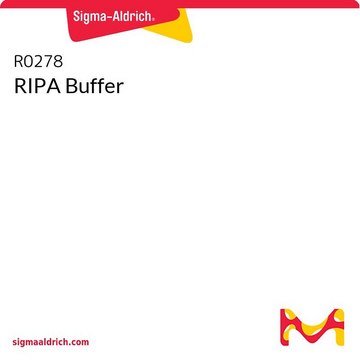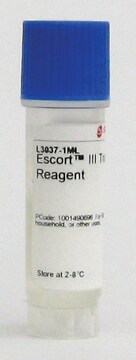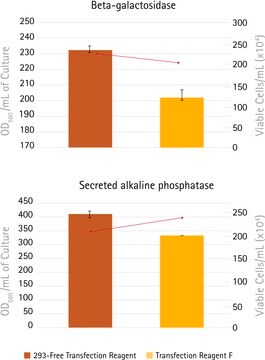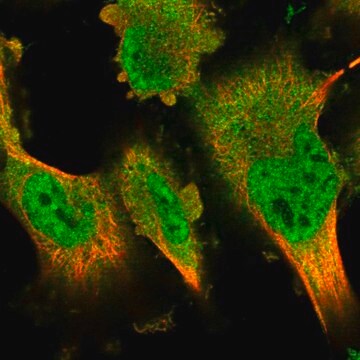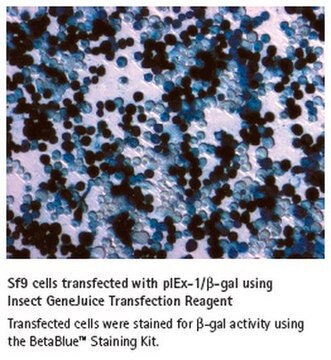推薦產品
等級
for molecular biology
品質等級
形狀
liquid (aqueous solution)
用途
mL (suitable for 165 transfections)
包裝
pkg of 0.4 mL (06365779001)
pkg of 1.0 mL (06365787001)
pkg of 5 × 1.0 mL (06365809001)
製造商/商標名
Roche
技術
transfection: suitable
儲存溫度
2-8°C
一般說明
應用
X-treme基因™ 9 DNA转染试剂适合的细胞分析有:
- 重组蛋白表达功能分析。
- 代谢通路生理研究。
- 使用报道基因的调节序列分析。
- 基因表达分析。
- 癌症研究分析。
- 目标评估。
特點和優勢
- 使用毒性极低,转染后细胞存活率高,生成可信任的生理学相关数据。
- 节省时间,减少操作步骤;只需对X-tremeGENE 9 DNA转染试剂进行简单稀释,再与质粒DNA共同孵育,即可直接向细胞添加反应混合物(有无血清均可)。
- 对于常用细胞无需进行费时费力的优化工作。
品質
外觀
其他說明
法律資訊
相關產品
訊號詞
Danger
危險聲明
危險分類
Eye Irrit. 2 - Flam. Liq. 2
儲存類別代碼
3 - Flammable liquids
水污染物質分類(WGK)
WGK 1
閃點(°F)
334.4 °F
閃點(°C)
168 °C
客戶也查看了
文章
Automation is used for many applications to reduce variation caused by manual handling and to obtain reproducible results in high-throughput assays. High-throughput applications, such as knockdown studies or target screenings, often include cell transfection.
Small inhibitory RNAs (siRNAs) have become the focus of interest in many laboratories. For the first time, these molecules offer an easy way to knock down the expression of selected genes in mammalian cells without having to resort to classical gene knockout techniques.
Transfection is the introduction of DNA, RNA, or proteins into eukaryotic cells and is used in research to study and modulate gene expression. Thus, transfection techniques and protocols serve as an analytical tool that facilitates the characterization of genetic functions, protein synthesis, cell growth and development.
Transfection is the introduction of DNA, RNA, or proteins into eukaryotic cells and is used in research to study and modulate gene expression. Thus, transfection techniques and protocols serve as an analytical tool that facilitates the characterization of genetic functions, protein synthesis, cell growth and development.
條款
Plate cells approx. 24 hours before transfection making sure cells are at optimal concentration (70 – 90 % confluency).
质粒的瞬时共转染是一种细胞蛋白互作研究、转录因子研究和shRNA编码质粒基因敲减研究的常用方法。
利用X-tremeGENE™ 转染试剂转染常见细胞系的实验方案
我們的科學家團隊在所有研究領域都有豐富的經驗,包括生命科學、材料科學、化學合成、色譜、分析等.
聯絡技術服務